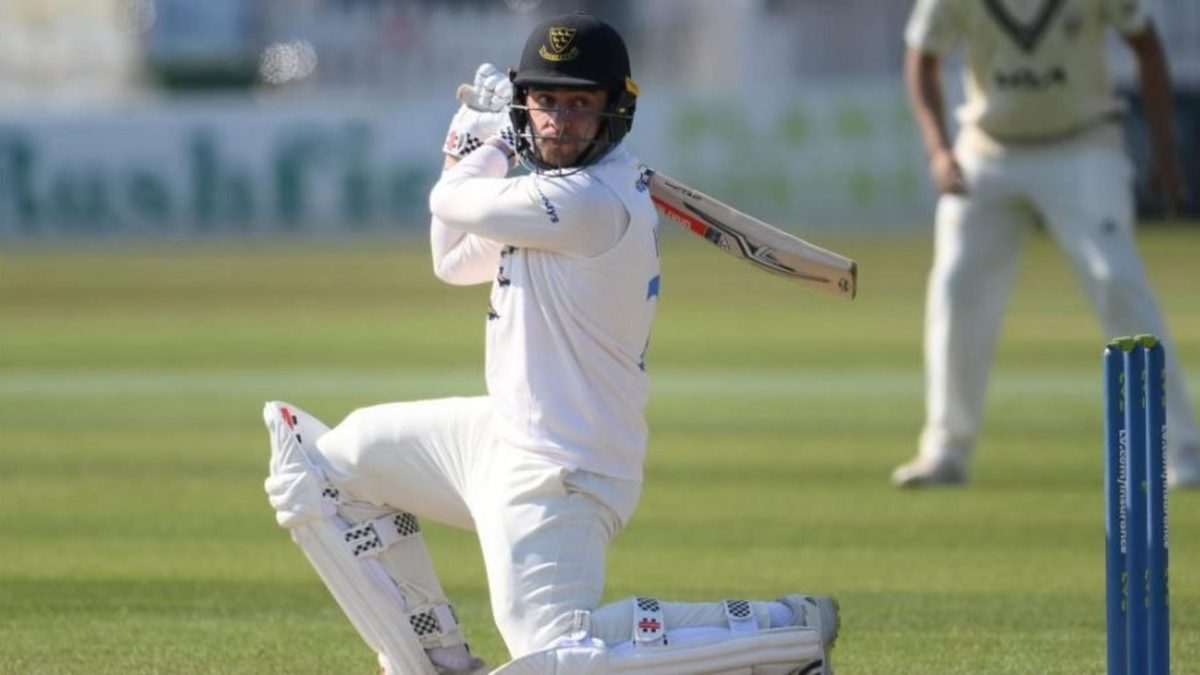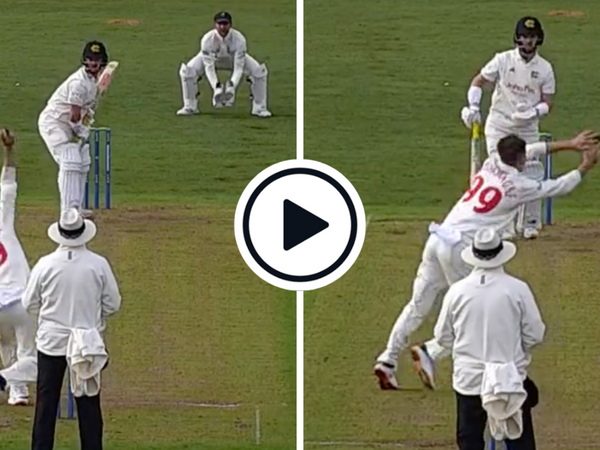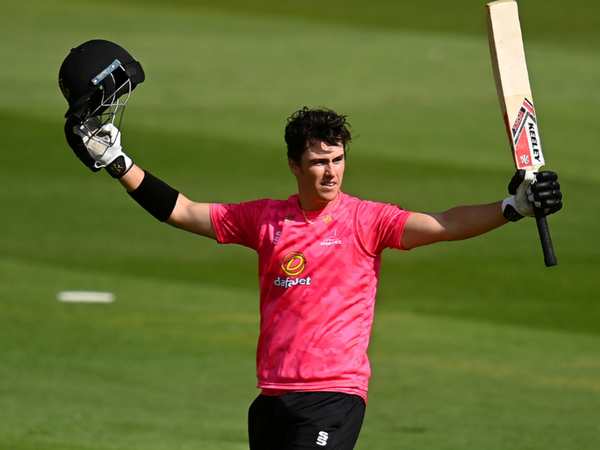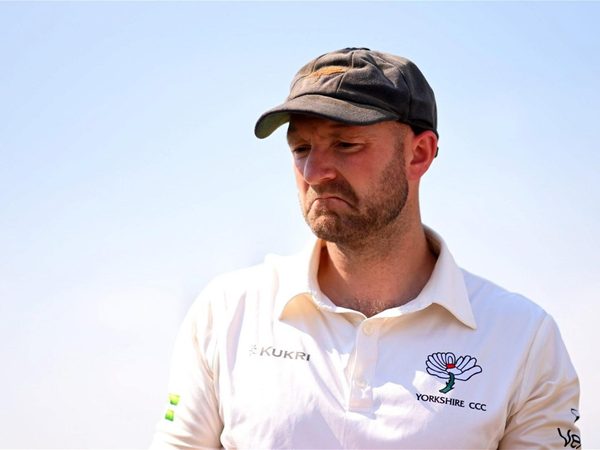
Yas Rana profiles Sussex’s Tom Haines, one of the brightest batting talents in England.
Twenty-eight different batters have finished the last 37 County Championship seasons as the competition’s leading run-scorer that year – 26 of them were or became Test cricketers. The two that haven’t? James Hildreth and Tom Haines.
Hildreth achieved the feat at the age of 31 with his hopes of that elusive England call-up already fading; Haines managed it last year at 22. He still has plenty of time to get his hands on the cap Hildreth never got a hold of.
The left-hander is building a compelling case for higher honours. Since his breakthrough hundred at The Oval in 2020, Haines has 1,748 first-class runs at 51.41* – a run of form that has seen him rattle off five centuries. He has been a rare shining light in what has been an otherwise tumultuous time for Sussex in first-class cricket.
Uncertain of a place in the side just two years ago, Haines is now Sussex’s County Championship captain – a young leader charged with guiding an extremely inexperienced group. Sussex fielded seven players aged 21 or under for their season opener against Division Two favourites Nottinghamshire, including two 17-year-olds in Dan Ibrahim and Archie Lenham.
Haines is well qualified to lead such a young band of talents. He made his own first-class debut as a 17-year-old before taking the best part of four years to properly establish himself as a first-team regular. A promising 2018 was followed by a 2019 that was “so tough” for the left-hander. In an interview with Wisden.com last year, Haines admitted to feeling “really angry” after losing his place in the Sussex side, even though he was aware that the decision to leave him out was the correct one.
“He’s old school in a new-school world,” his Sussex head coach Ian Salisbury tells Wisden.com. “He’s someone who loves batting time.” Such is the perceived paucity of batters capable of batting time in the modern game, those that do can sometimes be categorised as players incapable of batting in any other gear. Haines is no such player. He is capable of absorbing pressure but equally adept at punishing bowling that’s there to be hit – at the time of writing, his season strike rate is closer to 65 than it is to 50.
Salisbury is effusive in his praise for his captain and believes that Haines has the foundations of a game that could suit international cricket, though he has no complaints about the 23-year-old missing out on selection for England Lions last winter. “He hits in areas where the best left-hand opening batsmen have hit,” he adds. “If you look at his wagon wheels, he wouldn’t be too dissimilar to an Alastair Cook. If it’s too wide he’ll cut it. He’s not a hooker – he looks to pull rather than hook. He doesn’t rely on an extra cover drive or booming it through mid-off or mid-on. And he plays the ball late which is a crucial element to opening the batting. He likes to put the pressure back on the bowler, knowing that if they bowl a bad ball, he’ll hit it for four.”
There are no better role models for young left-handed openers in the English game than Cook, and it is a conversation with England’s greatest Test run-scorer that Haines credits for an uptick in his work ethic and, eventually, his run-scoring. “I spoke to Alastair Cook after the Essex game [in 2020] at Hove and he said all the best batters face the most balls in training,” Haines explained. “That’s how it is. That’s what they do. There’s no way around it. And it just made me realise, if I really want to do well in this game and get where I want to get to, then something has to change. The way I train is much better now.”
Salisbury recalls a similar conversation around a similar time. “I just said to him straight, ‘You don’t hit enough balls in training’. I just said, ‘We’ll throw you balls. If you need to hit balls, we’ll find time’. So sometimes, he might have made excuses then but he made a conscious decision after Alastair Cook said what he did. Then he scored a hundred off the back of hitting a lot of balls.”
Salisbury talks through a winter programme for Haines in the 2020/21 winter that was designed to help him bat for longer periods of time. “We said, ‘If you want a score a hundred in the first game of the season next year, it’s probability rather than luck. You make it possible.
“Generally, you face 90 balls in the morning session, 90 balls in the afternoon session and 90 balls in the last session if you want to score a hundred in the first game of the season. So we designed it so that he could hit 90 balls in the morning, you come back a bit later and you hit 90 more balls, and a bit later, 90 more balls.
“Sometimes we can get lazy with our training – myself included – sometimes you just forget [to do certain things]. First game of the season [in 2021], funnily enough, he gets a hundred.”
Haines’s double hundred against Derbyshire in April was another box ticked for a young opener turning heads. His two-day rearguard, mostly alongside new overseas recruit Cheteshwar Pujara, impressed Derbyshire opener Shan Masood, the game’s other double-centurion. “Having the attrition to not play a false shot for two days, to save a game for your team, that takes a lot of skill,” said Masood. “It’s not just a technical game, it’s physical, it’s mental, and he showed a lot of these attributes over those four days.”
As impressive as his recent form has been, it is still worth exercising some caution around expectations. He still only has six first-class hundreds to his name. While his 155 against Lancashire last April outlined his promise, he ended 2021 playing Division Three cricket and begins 2022 in Division Two. These environments can, at times, be some distance away from mimicking the challenges of Test cricket. But given the lack of obvious alternatives – England fielded two openers in the 2021/22 Ashes with first-class averages below 32 – a certain high-profile admirer and his recent trajectory, it may not be too long before Hildreth is the only odd man out.
*including his innings of 54 against Durham on Thursday, April 28








